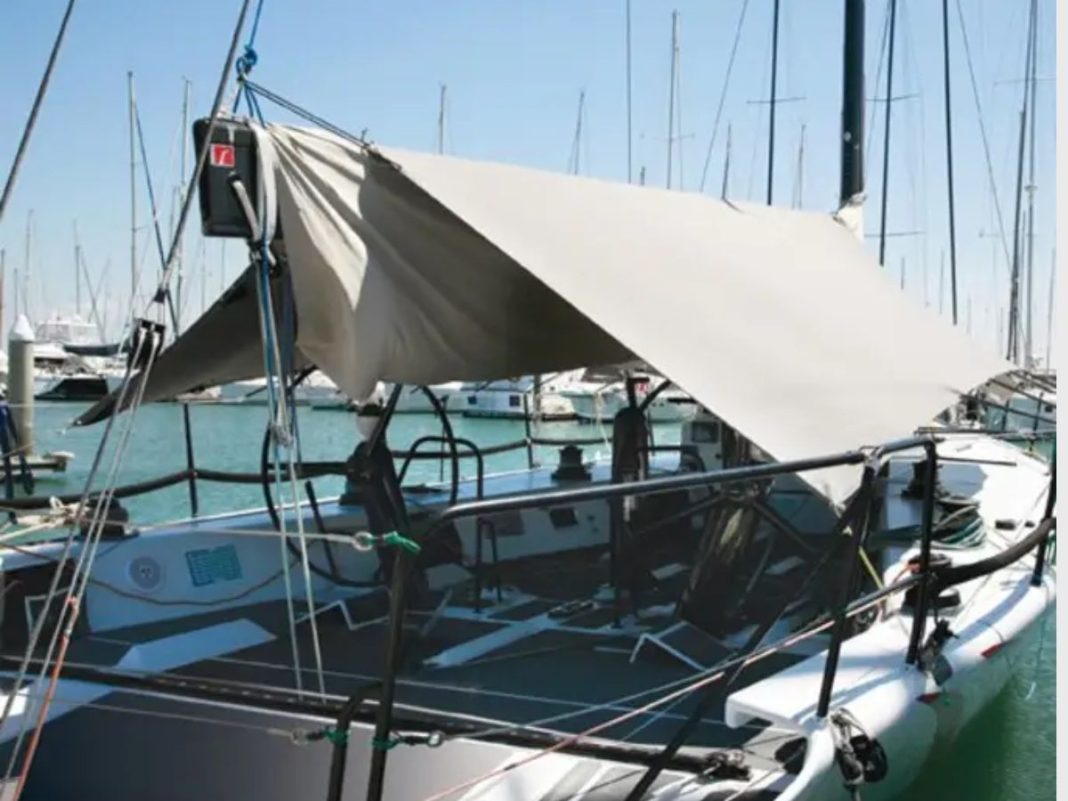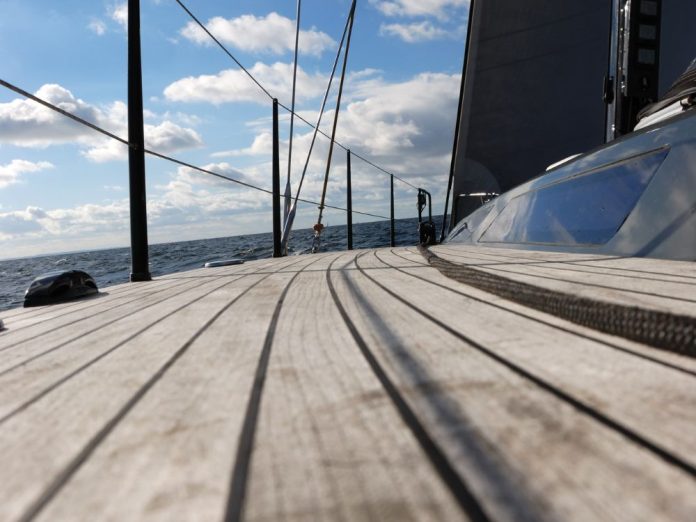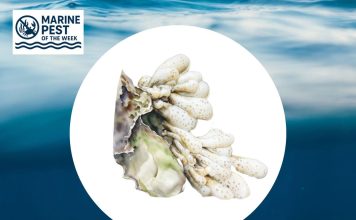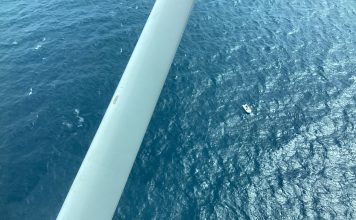A boom tent awning is a simple bit of gear that can completely change life onboard during summer. It stretches over the boom to create a shelter that keeps the cockpit cool, dry and comfortable. For many Kiwi sailors, it becomes an extra “room” at anchor. It delivers shade on hot days, shelter during drizzle and a dry place to stretch out at night.
For anyone living aboard full time, that difference becomes even more noticeable. We live on a Jeanneau Sunkiss 49 with our family of five, and airflow is part of our daily routine. We rely on the roof hatch in the saloon for airflow when we cook or boil the kettle, otherwise steam hangs inside the boat and the condensation becomes instant. Moisture absorbers like the Kontrol Slimline Moisture Trap from Burnsco are useful backups, but the real win is preventing moisture buildup in the first place.
But with rain falling these last few days, we had to improvise. We rigged a blue tarpaulin above the open hatch and propped it up to eke out some ventilation. It worked, but only just. With the wind swirling, one strong gust is enough to throw the whole setup off, and we find ourselves outside re-tensioning lines and adjusting angles again.
That small battle highlights why a proper boom tent awning can be such a game changer. Instead of juggling tarps and guesswork, a well-fitted awning keeps the rain out, the airflow moving and the cockpit usable in all conditions.
Why use them
New Zealand’s summer sun is intense and we still get passing showers, sometimes welcome relief when the air grows heavy and humid. A boom tent awning helps provide the shade you need on a hot day while keeping the airflow moving when cooking inside. When you want to stretch out on a towel on deck without roasting in the sun or settle in for a cool night’s sleep outside, a shade cover gives you that extra layer of protection. They are just as handy on a weekend cruise aboard a trailersailer, where cockpit space needs to work overtime, or during a wet week onboard when you need ventilation through the galley without letting the rain pour in.
A proper boom tent sits cleaner and tighter than improvised covers. The boom acts like a ridge pole, helping the awning shed rain and giving you headroom and airflow without the flapping you get from a tarp.
Buying the easy way: the Burnsco boom tent awning
For most boaties, the quickest approach is a ready-made awning that fits a wide range of yachts. The Burnsco Boom Tent Awning (for example) is a straightforward option, designed to rig over the boom and tie down to rails, the mast or the backstay. The UV-resistant, waterproof fabric is made for New Zealand conditions, and the rectangular shape (which comes in various sizes) suits everything from compact keelboats to older production cruisers.
It is light, quick to deploy and packs down small, ideal for weekend cruising, day trips and liveaboard families who want reliable cover without wrestling tarps into shape.
When a custom or DIY option makes sense
Some owners prefer a tailored awning that matches their exact boom height, sail cover shape and lifeline positions. A canvas specialist can build one, or you can make your own if you enjoy sewing and pattern work.
The DIY basics look like this:
- Measure from the sail cover’s spine down to the lifelines.
- Cut two identical marine-grade fabric panels.
- Hem edges securely with UV-stable thread.
- Install twist-lock fasteners along the boom-side edge.
- Add spur grommets along the lower edge.
- Sew the long centre seam that sits over the boom.
- Tie the lower edge to the lifelines using a durable rope such as Burnsco’s synthetic Manila.
It is a rewarding project, though for many boaties the ready-made version is more than enough.
Tips for setting up a boom tent awning
A few simple habits help your awning work at its best.
- Keep tension even to prevent water pooling.
- Use light rope or shock cord to soften the load in gusts.
- Keep airflow open in hot weather.
- Watch for chafe on the sail cover or topping lift.
- Drop the awning before the breeze builds.
Once you get the hang of it, setup takes only a couple of minutes.
Cleaning and care
Your boom tent awning lasts longer if you rinse off salt and grime. Brush away loose dirt with a soft brush, wet the fabric, then use a mild cleaner like 303 Multi Surface Cleaner with a soft sponge. Let it sit briefly, rinse well and always dry the awning completely before stowing.
Routine care includes:
- Avoiding harsh chemicals and bleach.
- Checking stitching once or twice a season.
- Rinsing after salty crossings.
- Drying fully to prevent mildew.
Ready for summer
A boom tent awning is one of the simplest upgrades you can make before summer. Whether you choose a ready-made option from Burnsco or explore a custom or DIY build, you end up with more shade, better airflow and a far more comfortable space at anchor. It gives your cockpit room to breathe and, for liveaboard families, removes the nightly dance of tarps and swirling wind.



















